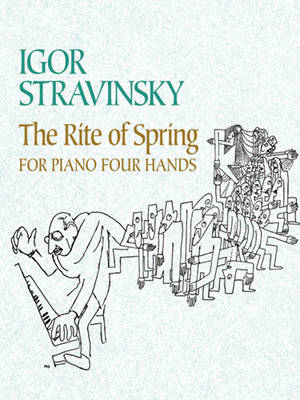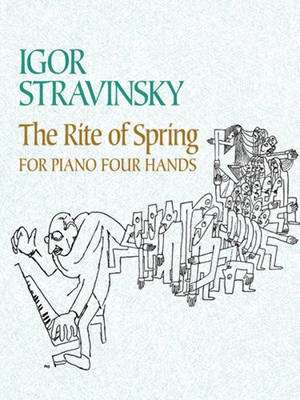
- Afhalen na 1 uur in een winkel met voorraad
- Gratis thuislevering in België vanaf € 30
- Ruim aanbod met 7 miljoen producten
- Afhalen na 1 uur in een winkel met voorraad
- Gratis thuislevering in België vanaf € 30
- Ruim aanbod met 7 miljoen producten
Zoeken
The Rite of Spring for Piano Four Hands
€ 23,95
+ 47 punten
Omschrijving
Composed for Sergei Diaghilev's Ballets Russes, The Rite of Spring premiered in 1913 at the Théâtre des Champs-Elysées in Paris. Igor Stravinsky's harmonically adventurous score--along with a scenario of pagan sacrifice and Vaslav Nijinsky's unconventional choreography--excited both opposition and support, and the event's climax in a near-riot remains among the most notorious premieres in music history.
Stravinsky created a version of the orchestral score for piano four hands, and it was in this form that the piece was first published in 1913; the full score was unavailable in print until 1921. World War I's disastrous effects permeated every aspect of European life, and there were few performances of the work in the years following its composition--which made this arrangement the primary introduction to the work. Scaled down for rehearsal purposes, this reduction provides a practical opportunity for two pianists to perform the complete work, or for listeners to delve inside the structure behind Stravinsky's landmark opus.
Stravinsky created a version of the orchestral score for piano four hands, and it was in this form that the piece was first published in 1913; the full score was unavailable in print until 1921. World War I's disastrous effects permeated every aspect of European life, and there were few performances of the work in the years following its composition--which made this arrangement the primary introduction to the work. Scaled down for rehearsal purposes, this reduction provides a practical opportunity for two pianists to perform the complete work, or for listeners to delve inside the structure behind Stravinsky's landmark opus.
Specificaties
Betrokkenen
- Auteur(s):
- Uitgeverij:
Inhoud
- Aantal bladzijden:
- 96
- Taal:
- Engels
- Reeks:
Eigenschappen
- Productcode (EAN):
- 9780486445397
- Verschijningsdatum:
- 19/05/2011
- Formaat:
- Ongenaaid / garenloos gebonden
- Afmetingen:
- 227 mm x 304 mm
- Gewicht:
- 344 g

Alleen bij Standaard Boekhandel
+ 47 punten op je klantenkaart van Standaard Boekhandel
Beoordelingen
We publiceren alleen reviews die voldoen aan de voorwaarden voor reviews. Bekijk onze voorwaarden voor reviews.











